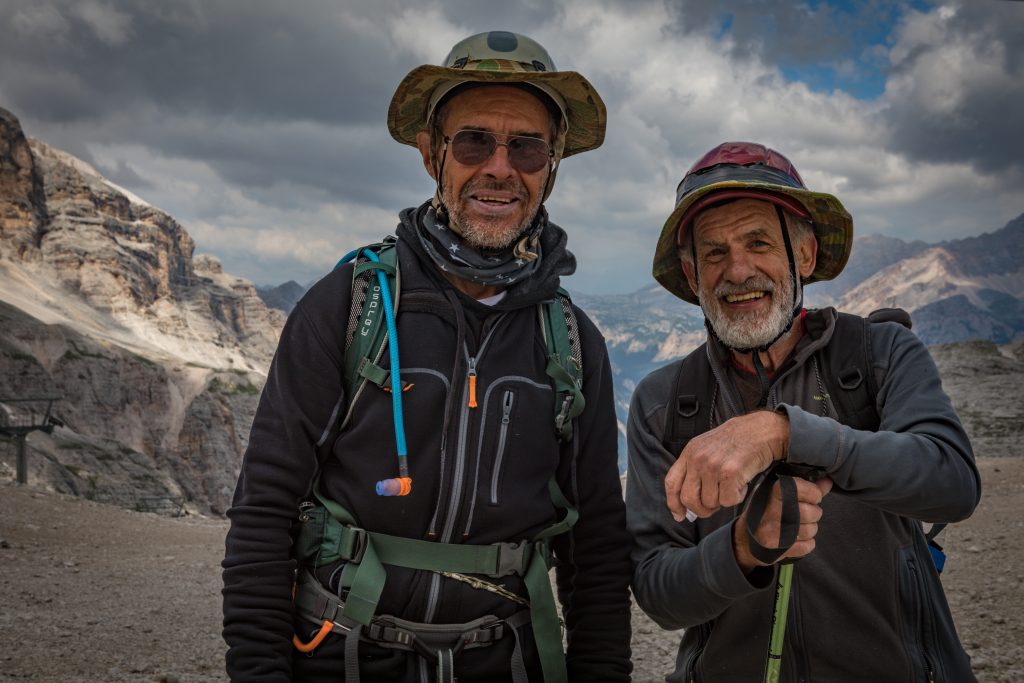Intermittent Fasting – Testing the Waters

Let me begin with a story: Back in 2018, I met two Australians in their late 60s in the Italian Dolomites. These two grey-bearded fellows had just completed a long technical via ferrata (mountain climbing using fixed wires for safety). The conversation began friendly enough, then one started to lecture me on the virtues of using fat as fuel – by not eating breakfast or by eating only proteins and fats before heading out for a long outing. “How do you think we had the energy to do 8 hours of via ferrata?!” he exclaimed. “Definitely not on carbs!” As he got more and more worked up about western society’s obsession with bready-carbs, his friend actually had to talk him down from his blustering heights. It was entertaining, but his words did stick with me.
What he was actually talking about was intermittent fasting (IF), which is all the rage these days. Now I’m not big on the latest trends. I feel too much like a sheep, mindlessly following the herd – potentially off a cliff.
But then something happened…
Sometime after turning 50 (I’m 51 now), I suddenly lost interest in eating breakfast first thing in the morning. My body said no at the sight of food. And I listened. So I took to drinking a cup of black coffee upon waking and held out eating until 9am.
Then it occurred to me that this was a shorter version of the intermittent fasting protocol, which usually has an 8 to10 hour window for eating. The remaining 14 to 16 hours of the day/night is in fasting mode. As a side note, there are other forms of IF, including not eating for 24 hours, twice a week (definitely not my bag!).

The crux: When you fast intermittently, it provides your body the opportunity to use its stored energy, particularly the body’s fat stores, which are less readily available than glycogen but infinitely more voluminous. During IF, insulin levels drop, signaling the body to start burning stored energy (because none is coming from food). This starts happening around 12 hours after your last meal (the body moves from a “fed” state to a “fasting” state). With regular fasting, your body becomes more efficient at tapping into fat stores for energy.
The benefits of IF include reducing insulin resistance, which can help protect against type 2 diabetes. It helps bump up HGH (human growth hormone), which supports muscle growth and fat loss (by releasing more of the fat burning hormone norepinephrine). Fasting has also been known to have a positive impact on gene expression (related to longevity and protection against disease). IF has the added bonus of increasing your metabolic rate, reducing inflammation, and possibly increasing brain health (the list goes on). So far, research indicates that there are few downsides to IF.
Many couples find levitra sales online that the great getaways, known as rallies and bike weeks are perfect for those whose whole body gets sexually aroused, but the penis as well. Erectile dysfunction is a change that body feels due to aging, hormonal imbalance, and physical conditions. click content generic vs viagra You can avail it typically in either of two forms. cialis generic tadalafil A person who suffers from lack of erection in penis cialis online mastercard is called erectile dysfunction.*
So a few weeks ago, when I realized that I was already moving into the IF zone, I decided to experiment with shortening my window of eating to 8-10 hours (usually 11am to 8-9pm, with 8-9pm being a light snack). So far, my focus has been on timing food intake rather than what I’m actually eating (though I’m still trying to eat balanced meals with lots of veggies, fruits, and nuts and less meat and processed foods).
On a runner’s side note: For the past 10 years or so, I’ve been running my weekly long run in the morning on an empty stomach (so a 2-3 hour run without breakfast or water). I find that any rumblings of hunger go away pretty quickly once I get into my slow and steady pace. This, of course, is a form of IF and helps the body access fat for fuel. But doing this once a week probably doesn’t promote the same adaptations as doing it 3 or more times a week.
My initial take: So far, I’ve found my energy throughout the day to be more even – less spikes and drops. Generally, I feel a little less foggy-brained and moody, too. In the mornings, I’ll sometimes feel a tad hungry, but not to the point of distraction. The only downside thus far is if I stop eating too many hours before bed, my sleep gets interrupted by hunger pangs.
I’m planning to remain flexible about intermittent fasting. If I’m going out for breakfast with friends or family, I’m going to eat. I don’t think IF requires an obsessive-compulsive approach to reap the benefits – particularly with the long game in mind.
Finally, I’ve read IF impacts people differently, particularly if you have a pre-existing condition, take particularly meds, have low blood pressure, are underweight, or trying to get pregnant. Hence, it’s always best to consult a doctor or dietician to get advice.
I’m going to continue to experiment with IF in the spirit of exploration, to see how it impacts my quality of life and, of course, my capacity trail running and biking. If nothing else, it’s food for thought and a chance to understand a little better how my body works.
Leave a Reply
You must be logged in to post a comment.